This is an edited version of a speech I gave at the Digital River Monetization Summit at the Game Developers Conference last week. A lot has changed in gaming in the last week, and I’ve added a few remarks to reflect that. I hope you enjoy it.
I hope you are aware of the term opportunity cost. I am grateful that you are here and not somewhere else. You came here to listen to a talk on games from someone who has never made a game in his life. That also means I have never monetized a game in my life, except by writing game reviews or game news.
You are missing out on something by being here. The best thing you could do right now is leave here, go straight the Changyou booth, and get a check from them. The Chinese online game company announced it would invest $600 million in mobile game developers. So leave early, and save me a spot in line. For the rest of you, I’d like to show you how I try to connect the dots for readers. We do that on our web sites, GamesBeat and VentureBeat, and at our own game conference, GamesBeat 2014, which will be held Sept. 15-16 this year in San Francisco.
After all this time covering games, I figured it was time to give my own talk, even if it is filled with the thinking of a lot of smart people and not so much my own original ideas. What I would like to do is toss out some facts in this talk, connect the dots, and answer some questions about the state of the industry.
My first statement is that numbers can tell you something.
That $600 million figure from Changyou is telling. Changyou’s value in the market is $1.5 billion. If you want to buy it, you have to pay that amount. Changyou is risking about 35 percent of its value on mobile gaming. Now that takes guts. The former CEO of HP got fired because he risked 20 percent of the company’s value on an acquisition that brought in 1 percent of revenue.
Before we move into the questions, let’s take a look at the stock prices (as of March 14) for a bunch of companies in the game space, including both the owners of game platforms and the game publishers. One way to look at it is this: If Apple is worth $468 billion, then surely Supercell must be worth $3 billion? If that thinking sounds a little flawed, don’t be surprised. These are investors who come up with these numbers, and they don’t always pay attention to relative valuations. If you’re at the top of this chart, you’re royalty. If you’re at the bottom, you’re a slave.
Now here’s a trivia question. Which one of the companies here is the largest game company in the world, based on game revenues? If you answered China’s Tencent, you are right. Newzoo announced that Tencent’s annual game revenue in 2013 was about $5.3 billion, or 8 percent of the whole $70.4 billion global gaming market. Tencent’s top game is CrossFire, a five-year-old free-to-play shooter developed by South Korea’s SmileGate. It made $957 million in revenue last year, according to SuperData Research. I think it is why Call of Duty isn’t really going anywhere in China.
Are we in a golden age?
I think the answer to that is an unequivocal yes.
Smartphones and tablet games are growing like crazy, with revenues hitting $12 billion last year. And the consoles are coming back strong too. Michael Pachter, who is always right, predicts that growth will come back for consoles and handhelds.
Console and handheld software grew 75 percent from 2005 to 2008, then declined 45 percent from 2008 to 2013. Pachter predicts 9 percent compound annual growth for consoles and handhelds through 2016. Meanwhile he predicts PC free-to-play games will grow 20 percent to 25 percent in the next few years.
All parts of the game business are growing, and the number of viable platforms is multiplying. Tim Merel of Digi-Capital predicts global gaming will grow from $70 billion to $100 billion by 2017. At that point, he predicts mobile and online will be 60 percent of the total.
According to Merel, the average investment for a game startup in 2013 was $6 million, up 14 percent from 2012. The total amount invested in 2013 returned to the 2010 level of $1 billion, after a dip in 2012.
The average M&A deal was $64 million in 2013, up 23 percent from a year ago. The total value of M&A deals was $5.3 billion, up 29 percent from a year earlier.
Newzoo estimates that there are now 1.23 billion gamers on the planet. Flurry says 525 million are actively playing games on a monthly basis. That is pretty golden.
Are we in a bubble?
Uh, that’s probably a yes too. But it’s only a bubble if the industry is going to pop. Right now, there is no sign that this is going to happen in 2014. Of course, all bets are off if the world economy takes a bad turn. But look at the valuations of those companies on our list. They can still afford to buy a lot more companies.
Nine of 10 of the biggest game company buyers in 2013 were Asian. And 30 companies in Asia have $1 billion in cash or more, and all of those have done game acquisitions in the past, according to the Corum Group. They can still pump a lot of air into this bubble.
The bubble will deflate now and then. But the air never completely goes out. Investments move in cycles, just as the industry itself does. If King’s IPO goes well, that will open to door for more IPOs and more valuation growth. If it goes badly, as it could because of the concern about one-hit wonder nature of Candy Crush Saga, the bubble will lose air. [With King’s value slipping from $7.6 billion to $5.8 billion in the first couple days of trading, we’ve lost some air].
Who is going to buy whom?
[This is the section I wrote before Facebook bought Oculus VR for $2 billion. My take on that is here]. Well, it’s no longer just the Japanese doing the buying. The other Asians and the Eastern Europeans are also going shopping.
Let’s go back to that valuation chart. You can pretty much guess that those at the top of the list are in a position to buy those at the bottom of the list.
So your destiny as a game designer is to work for Apple, Google, Microsoft, Amazon, or Disney. These are five companies that have built what I call accidental game empires, after the book by Robert X. Cringely, Accidental Empires: How the boys of Silicon Valley make their millions, battle foreign competition, and still can’t get a date. Yes, the people who hold the fate of the game industry in their hands have no experience with games and, very likely, they don’t play games.
But don’t worry. These companies have built technology platforms. And games are so insidious that they worm their way onto every platform and dominate it, much to the dismay of the clueless nongaming platform owner. As Seamus Blackley, the co-creator of the Xbox, said, “Games find a way“. It’s like life finds a way to survive. So do games, no matter how many people try to keep gaming penned up in a niche, close it off in a ghetto, or dismiss it as something for children. Games will find a way.
The benevolent view of these platform-owning benefactors of the game business is they let game publishers and developers do their thing. It’s a kind of benign neglect. That is, until a game company needs something out of them. Like, say, you want Apple to stamp out bots or fake reviews. You can ask Apple to do this, but I’m not sure they are going to listen.
You could also say that benign neglect can produce great results. Apple’s App Store generated $10 billion in revenues in 2013. The Google Play Store quadrupled its payments to developers in 2013.
Three out of four Android device owners are playing games. But before we get to excited, the average price of an Android game is six cents, according to Flurry.
These companies concentrate on making great platforms, and the game companies create their masterpieces on top of them. If you compare the results of the accidental game CEOs to the results of the game savvy CEOs, like those sitting atop Activision, Electronic Arts, and Nintendo, you can argue that the nongame CEOs are doing a better job.
Yes, the fate of the game industry is in the hands of nongamers. But even that is going to change. As you recall, the ESA says the average age of a video game player is 30. 58 percent of Americans play games. And perhaps 80 percent of young people play games. So the nongamers will die off. Ultimately, everybody will be a gamer, and the term will lose its meaning, like a movier.
And don’t forget about gamification. Those big platform companies are adopting game-like incentives in the name of growth. Gaming will find a way to take over these companies.
John Riccitiello, the former EA CEO, believes that games, and gamers, will get their revenge. The value on our chart at the top is too heavily focused on the platforms and not the content creators. He believes that, in the future, content creators will create more value. An example he brings up is Netflix, which, right or wrong, can be classified as a content company. Apple competes with Netflix in movie distribution via iTunes. But it tolerates Netflix on Apple platforms because consumers want Netflix’s content. Apple cannot push Netflix around because consumers would get upset if they could no longer access Netflix on Apple devices. Disney is another example of a very powerful content company. And nobody pushes around Mickey Mouse.
Riccitiello believes that, if our golden age of games develops as hoped, then the value created by the content companies will rise in proportion to their rightful place in entertaining consumers.
If the counterforce movement toward openness curbs the power of the platform owners, that will enable content companies to grow to their fullest. That may sound like wishful thinking, but I think this is the way that game companies could conquer the world. That is why an open ecosystem is an economic gold mine.
Do the game company valuations make sense? No.
Let’s go back to Wall Street and the Wisdom of the Crowd. Those prices are set by investors, and they have to be right, no? That’s capitalism. Supply and demand.
Another way to look at this is to view Take-Two Interactive at $2.1 billion and say that is basically the value of the Grand Theft Auto series. Try as it might, Take-Two has had a hard time convincing investors that anything else it does besides Grand Theft Auto is worth anything. So let’s call $2 billion our unit of currency, or one Grand Theft Auto.
This means that Ubisoft with Assassin’s Creed and Watch Dogs is only worth three quarters of a Grand Theft Auto. Supercell, meanwhile, is worth 1.5 Grand Theft Autos. Zynga is worth about two Grand Theft Autos. Because of Call of Duty, World of Warcraft, and Skylanders, Activision Blizzard is worth eight Grand Theft Autos.
Now, as you start thinking about all those Grand Theft Autos, you have to wonder: Is this valuation right? Grand Theft Auto sold more than 32.5 million units, or about $1.9 billion worth at retail.
King made $1.8 billion in revenue last year, about the same that Grand Theft Auto 5 made in revenue. But in its IPO filing, King is supposed to be valued at 3.5 Grand Theft Autos. Why? Well, King had $568 million in profits in 2013, or twice as much as Take-Two.
Now you could argue that this isn’t fair. King made Candy Crush Saga with three people. Rockstar employed hundreds over five years at a cost of around $260 million. But Rockstar made back its investment in the first 18 hours of GTA V sales.
Take-Two is basically trading at around one times current sales. Zynga is trading at four times sales. Supercell, which had $892 million in sales last year, received an investment at about three times sales. Clearly, investors don’t care about console games.
Here’s takeaway No. 1: Wall Street doesn’t understand games. By extension, investors, venture capitalists, and others don’t understand games. Certainly not the way that gamers or game developers do. And that has consequences for the game industry.
Who is going to win?
One of those consequences is arbitrage. When there are barriers in the market, inefficiencies can emerge, and somebody takes advantage of it.
A good example of this was in the late 1990s, when the French stock market soared and Infogrames was able through a combination of stock and debt to buy GT Interactive, Hasbro/Atari, and Shiny. That came to an end when Infogrames crashed in 2002. This was an example of geographic arbitrage, and we can see that the same opportunity exists today thanks to the huge growth of the valuations of the Asian companies. You could argue that they are overpaying for their acquisitions. But they are playing with inflated currency, or funny money, because of an overvalued stock market. They can afford to pay more, while other companies sit on the sidelines and gape at the high prices.
You can see the geographic arbitrage strategy emerge on a global scale now, and that is why we are using Total World Domination as the theme of our GamesBeat 2014 conference.
SoftBank is a good example. It invested in GungHo Entertainment, and it paid $1.5 billion for a 51 percent stake in Supercell. It is looking to invest in a number of companies in the West as well. That’s because it wants to build a global gaming company. If you are not thinking about building a company that can create popular games in Asia, Europe, and North America, then SoftBank may very well have you in checkmate. Global companies matter in just about every industry, with two or three winners. Why should gaming turn out any different?
There are other kinds of arbitrage. When users move to a new platform, an opportunity arises. Don Mattrick, the CEO of Zynga, told me in an interview that Zynga didn’t succeed with FarmVille on mobile, and that left an opening for Supercell’s Hay Day. When a platform changes dramatically, moving new content to that platform isn’t copying. It is basically starting the race over again from ground zero. Anything can happen. Bejeweled took off on the casual web and the PC. But King’s Candy Crush beat Bejeweled first on social networks and then on mobile. King played the arbitrage game better.
Who is the most efficient at making games? How many people do you need to make great games?
These are some very vexing questions.
Game design is, of course, entirely unpredictable. You never know what kind of game will be a hit. You can only monitor the process of making a game and turn the dials until you think it is just right.
But it is a little comical to apply some numbers analysis in the same way that Wall Street analysts look at the efficiencies of businesses. One metric they look at is revenue per employee. The more money you make from one person, the better you are.
King had 665 employees as of Dec. 31, 2013. With $1.8 billion in revenues in 2013, King had $2.83 million in revenue per employee.
When Zynga went public, it had roughly 3,000 employees and $1 billion in revenue, or about $333,000 in revenue per employee.
So King appears to be much more efficient in that respect, and it has been cautious about hiring too many people. Zynga, by comparison, has had to cut back by about a third on its headcount as its revenue stalled. GungHo Entertainment, with about 700 employees and $1.6 billion in revenue, has about $2.2 million in revenue per employee.
Supercell has about 190 employees and 2013 revenues of $892 million. That adds up to $4.69 million in revenue per employee. It doesn’t get much better than that. Supercell should hire more people.
But who is the most efficient of all?
Flappy Bird. That’s right, dotgears, which is owned by one guy, Dong Nguyen, a lone developer in Hanoi, Vietnam. He created a game that was generating $50,000 a day before he pulled the plug on it. And as we know from an article in Rolling Stone, the announcement that he was pulling the plug caused 10 million people to download the app. And he continues to make money from those people. If he makes $50,000 a day for a full year, then he is the most efficient of all at $18.25 million per employee.
When Zynga had 3,000 employees, it had 150 people with the title of game designer. It had enough people to make 150 games with maybe 10 or 20 people on each game. Somehow, they fell behind. King made Candy Crush with three people. It now takes about 40 people to maintain the updates for Candy Crush. Supercell’s name comes from the fact that it divides itself up into cells, or teams of around five people, and iterates on its games over and over. It is shipping its third game in four years sometime soon. Machine Zone made a calculated bet of putting 80 of its 95 employees to work for 19 months on Game of War: Fire Age. It also raised money to finish the game. That has paid off in a title that has been in the top-grossing ranks for months.
The math doesn’t always work. Games are a hit-driven business. The question will always come down to who is a hit factory, and who is a one-hit wonder?
The way to figure this out is to look at the details. Is the company applying the art of craftsmanship to its games? Is it iterating, testing, and ruthlessly revising its games? Does it have the best and most experienced talent? If you look at King, it is turning out one Saga game after another, each with hundreds of levels. It is trying to be very methodical about how it makes its games.
Who is going to grow?
Here are my thoughts on the hottest trends. Mobile messaging networks are hot, as Facebook’s $16 billion purchase of WhatsApp suggests. Kakao, Line, and WeChat are gathering hundreds of millions of users in Asia, and many of those are playing games. They are succeeding in part because they have fast wireless broadband. But they are also winning because it has become so easy to quickly access and play games on these networks. On the promise of better games on top of its mobile messaging network, Tango raised $280 million from investors including Asia’s Alibaba.
Another hot trend is livestreaming games on Twitch. Twitch accounts for 1.8 percent of the traffic on the internet now. It is a powerful, mainstream medium that reflects the rise of gaming and eSports. About 68 percent of those Twitch viewers are dialing down their TV watching time. Raptr found that when League of Legends added spectator mode, it saw skyrocketing retention.
Another clear winner is community in games. Eve Online is an example of this. This 10-year-old sci-fi online game is still making headlines. In one giant battle, $300,000 to $500,000 in real-money investments in spaceships was wiped out over the course of 21 hours in a fight that involved 7,548 players.
But how do you measure the value of community? Ninja Metrics has an interesting take. Dmitri Williams, their CEO, says that you can classify some players as “social whales.” These people may not spend any money in a game. But they are social and they get a lot of people to come back into the game. They are great for retention. Social whales are influencers. They are 10 percent of the population, but they drive 60 percent of the value. How do you make money? It’s the community, stupid.
If you deliver incentives to those social whales, you’ll get results. Now we have seen a lot of angst about the rising cost of user acquisition. SuperData Research warned of a bloodbath among mobile developers because the cost of acquiring a new user was above the average revenue from a user, or $2.73 in cost back in December to about $1.96 in revenue.
But there’s a few people who are asking a smart question, like at the startup Yvolver, run by Steve Nix. Why don’t you focus on the gamers you already have?
Hal Brierley is a loyalty rewards guru who has been designing rewards programs like AAdvantage, Hilton Honors, and GameStop Power Up Rewards for three decades. He advises Yvolver, and he says that it is six times more effective to keep a customer than to acquire a new one. So Yvolver is figuring out reward programs that will keep people coming back to games. That will improve engagement, and that will lead to better monetization.
Now Yvolver hasn’t fully explored this territory yet. Brierley likes to point out that we have become an incentive-based society. Credit cards and travel rewards have changed us. If you design the right incentive, the pay off is huge. But remember there’s a difference between intrinsic rewards, which are more genuine and have a bigger impact, and extrinsic rewards, which are relatively shallow.
So what’s the logical extension of Brierley’s thinking? Who is going to pay me to play games? I don’t want some reward I’m never going to cash in. I want to get some money in exchange for my addiction.
Now that is kind of funny. But that brings us to our final question.
Is there a dark side to the industry?
Real-money gambling is highly regulated because it can be so addictive. You can lose your house, and the authorities and the newspapers will blame the online gambling companies if that happens. By extension, game companies will want to make their games addictive, but not too addictive. Nobody really wants to make money off someone’s habit, except drug dealers.
Paul Gardner of the Osborne Clark law firm warned at Casual Connect Europe that, because of the excesses of overly aggressive monetization in the game industry, policy makers are about to regulate virtual goods.
Some of this has to do with protecting kids and parents, so that you don’t see your credit card bill littered with $99 Smurfberry purchases. UK regulators found in a study that game makers should be more transparent and accurate about costs in a game. If you hit level 11 of a game and you discover you have to make an in-app purchase to proceed, then why didn’t the developer tell you that up front?
I have covered a few player rebellions as companies like Zynga sunset their games and give very little notice to players that it’s going to happen. They might have bought a ton of virtual goods, and, when the game faces being shut down, their only recompense is getting some virtual goods in another game that they don’t want to play. I’ve seen these rebellions happen at companies like Game Insight and Kabam. Everybody can get blindsided here.
I became a whale in a Kabam game purely by accident, because I accidentally hit a very large button on my screen that let me instantly buy Mithril. Peter Molyneux, head of 22cans and the creator of the Fable series, said it was shameful how developers are exploiting gamers. We have hard monetization walls. We have pay to win. We have great targeting that risks invading privacy.
Here is a prediction about free-to-play gaming: Every game company that decides to betray its users and make mid-course changes to policies on virtual goods is going to face a player rebellion.
Jade Raymond, who makes AAA games at Ubisoft, said at a dinner at GDC, “Don’t treat your customers like rats going through a maze to get a piece of cheese.”
A lot of my talk has been about this fascination with money and keeping score. But my message at the close of this talk is to say that you should be aware of your responsibility.
Bruce McMillan, a former EA executive, once said here at the GDC that in a 30-year career, you will only get a chance to make a game once every three years. So you may only get the chance to do 10 games in your career. We can change that math now. With mobile games, you can make a lot more. But Bruce’s point is still true. You should make every game special.
As Jamil Moledina, the former head of the GDC and now a game guy at Google, recently told me, your obligation is to innovate. In a world full of copying, that’s not easy to do. But whenever you make your game or design your monetization, make a contribution to innovation.
VentureBeat's mission is to be a digital town square for technical decision-makers to gain knowledge about transformative enterprise technology and transact. Learn More
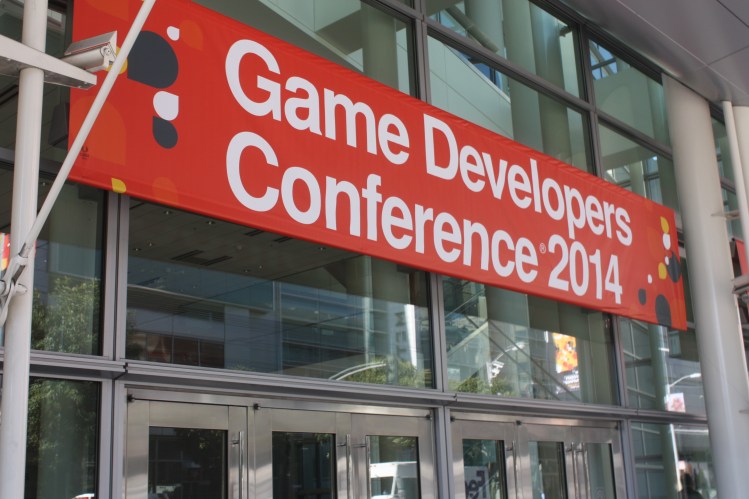
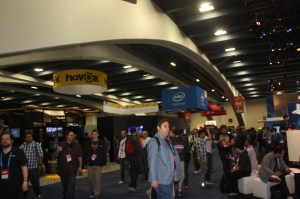




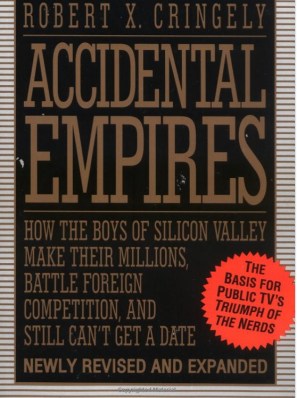
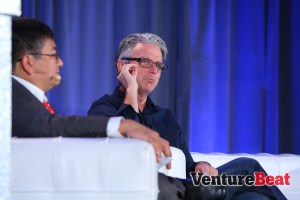
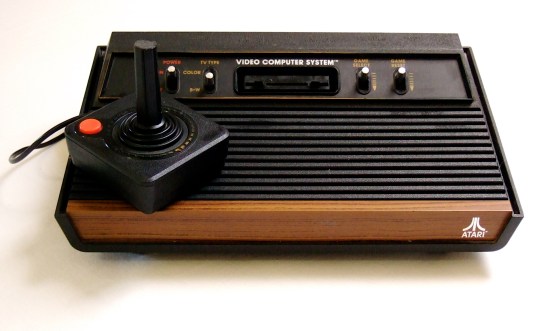


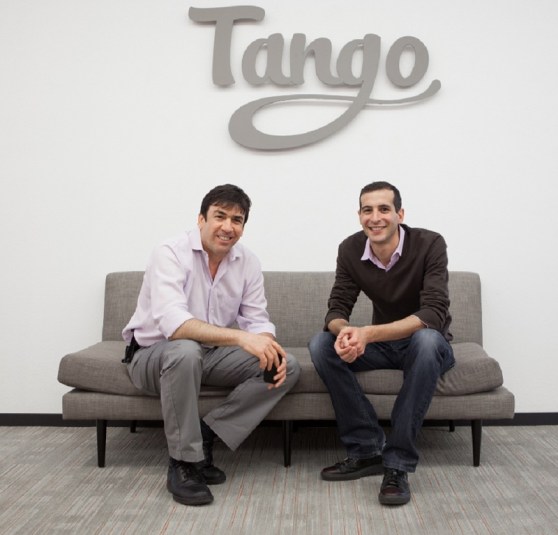







![Reblog this post [with Zemanta]](http://img.zemanta.com/reblog_e.png?x-id=2286ed7f-0cfc-4fe8-b3e9-7b1c336c51a1)
